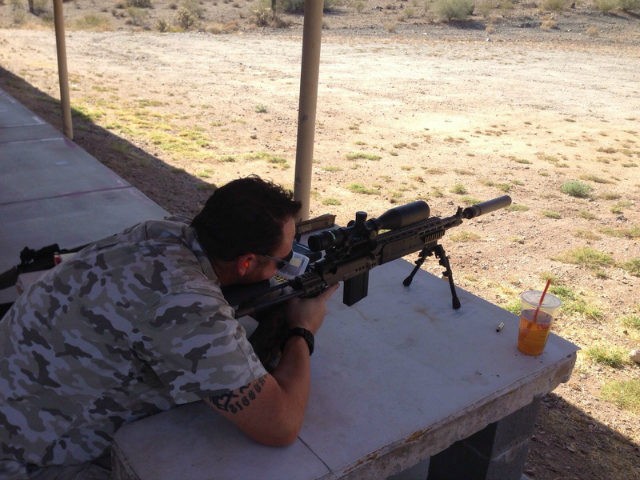Time to talk about the truths and misnomers regarding suppressors. Many people see them as a magical tool that allows you to shoot your way through buildings and around corners and fire from hidden positions with nothing more than a hand-clap of sound, all the while dealing a more deadly blow to the enemy downrange.
But those with real world suppressor experience understand that while such Hollywood myths can be achievable, so many variables have to be met that it is a far cry from the latest Jason Bourne installment.
Consider a 5.56mm moving at 3100 fps; that is a common round for a common rifle–the AR-15. Anyone who has ever fired one without hearing protection knows it is a painful occurrence. Several factors contribute to the sound signature of a rifle being fired, such as the 26 grains of powder being ignited, the supersonic crack from the projectile breaking the sound barrier, and the unmistakable action or cycling of the rifle.
The main function of a suppressor is to trap the air and unburned powder escaping the muzzle so as to reduce–or in some cases eliminate–the loudest part of the equation. A well-designed suppressor will trap most of the muzzle blast, making even the largest of calibers ‘hearing safe’ or will reduce the sound signature so it is within safe hearing levels. But anything, regardless of size and shape, moving through the air at 1050 fps +/- will create a sonic crack or boom which is the most distinct sound of a firearm being discharged.
Enter subsonic Ammunition. Subsonic means any speed lower than the speed of sound. Most subsonic ammo consists of a heavier projectile loaded with less powder to keep it under the 1050 fps +/-. Due to the reduced pressure, rifle caliber subsonic ammo as a rule will not cycle the action of a semiautomatic weapon. There are, however, a few exceptions. The most popular of these is undoubtedly the 300 Blackout Cartridge.
While a great performer when using supersonic loads, the Blackout is truly “movie quiet” when shooting the heavier, slower subsonic loads. The heavier projectile lends more pressure to the operating system and cycles the weapon reliably.
Suppressors are currently regulated by the National Firearms Act (1934), so when purchasing a suppressor I recommend you find a reputable retailer that will help file out your paperwork and walk you through the steps and laws of your state. While suppressors may not seem practical for some, they are a useful tool to many sport shooters, hunters, and law enforcement/military personnel.
Hopefully this sheds a little more light on the benefits of suppressors and answers any questions on how they operate. Now fire off that email to your legislators and ask them to support the Hearing Protection Act of 2017. It will make suppressors available to all law-abiding citizens without the 12-month wait and $200 tax stamp.
George Urmston is the president of Battle Tested Equipment and a guest columnist for “Down Range with AWR Hawkins.”

COMMENTS
Please let us know if you're having issues with commenting.